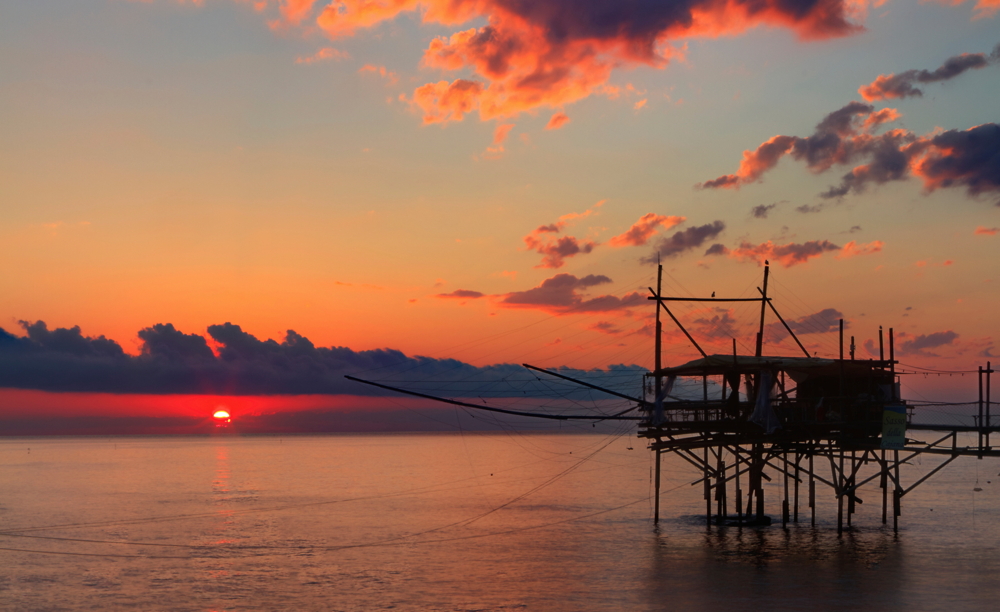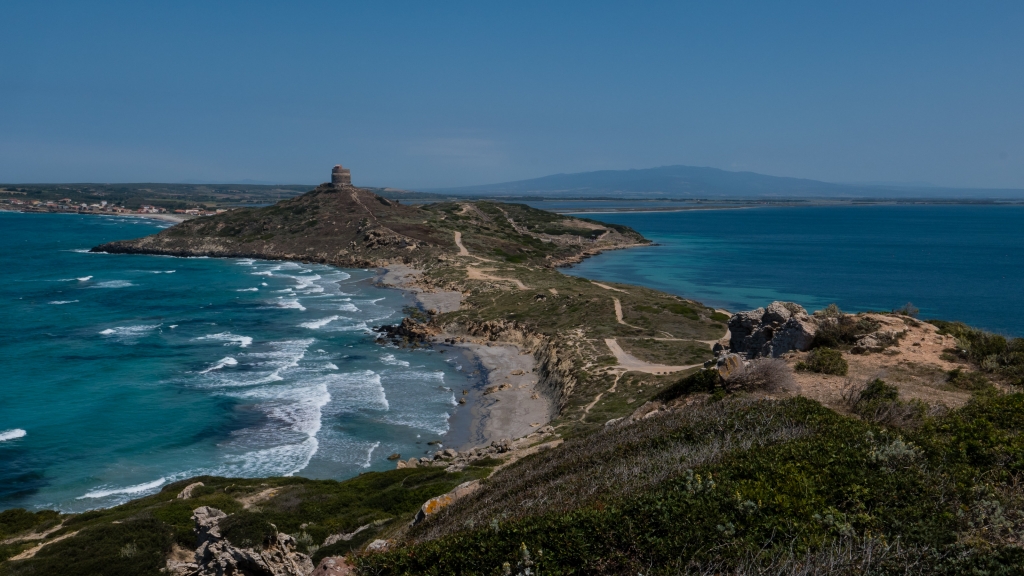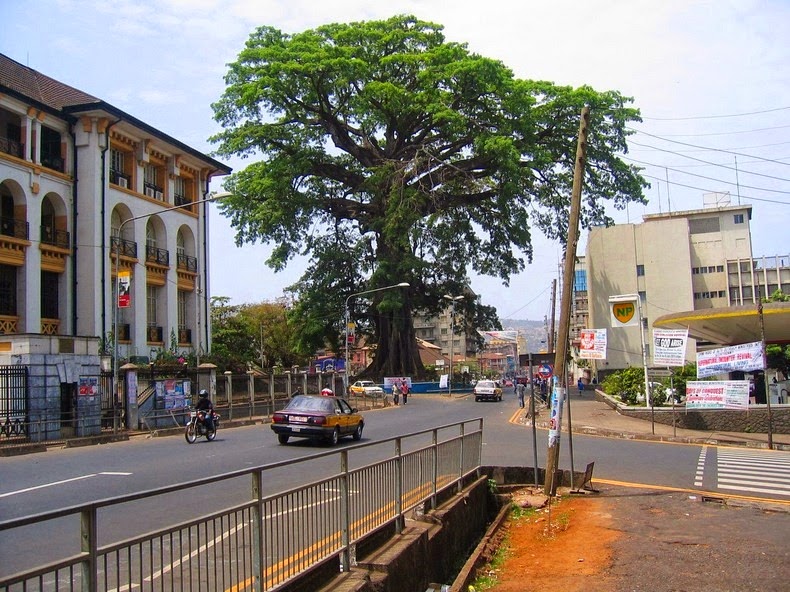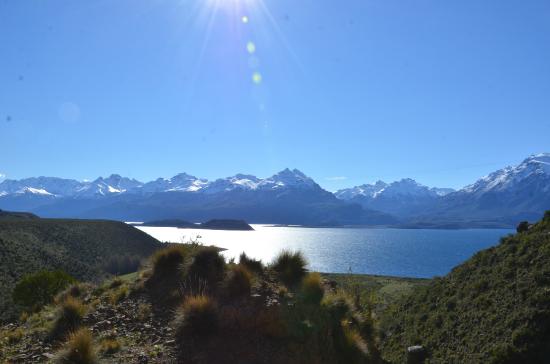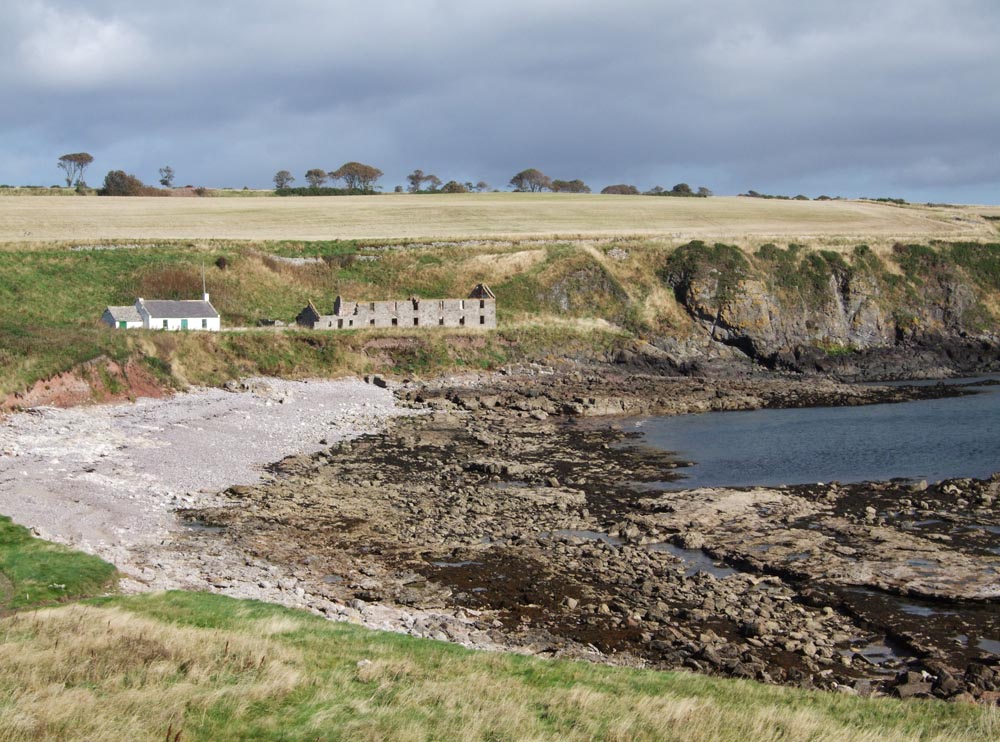A trabucco is a large wooden construction, a real fishing machine, with a platform bonded to coastal rock by big pine logs and two, but sometimes more, antenna-like cranes stretching out over the water to support big fishing nets, better known as “trabocchetti”. Italian fishermen adopted this technique for its feasibility in adverse weather conditions, as fishing from the solidity of the high, rocky coast was favored over attempting to sail over a dangerously agitated sea. You’ll need four people to run a trabucco properly, two to operate the winches–though today the winches are often managed electrically and run with a simple switch–and another two fishermen to actually monitor the fish and nets.
Trabucchi are very common on the Gargano coast, especially in the area between Vieste and Peschici, right on the North of the Apulia region, and in Abruzzo, in the Chieti area. Trabucchi are typically of large dimensions and have a great historic value, to the point that the national park of Gargano protects the oldest ones. Their social and cultural value is very important, especially in light of their centennial tradition on the Apulian’s coast. Highly visible in Apulia and Abruzzi on the Adriatic Sea, the trabucco can also be found on the Tyrrhenian Sea, on the coast of Calabria, proving that this old fishing machines were widely used by many communities, in different parts of the Mediterranean.
